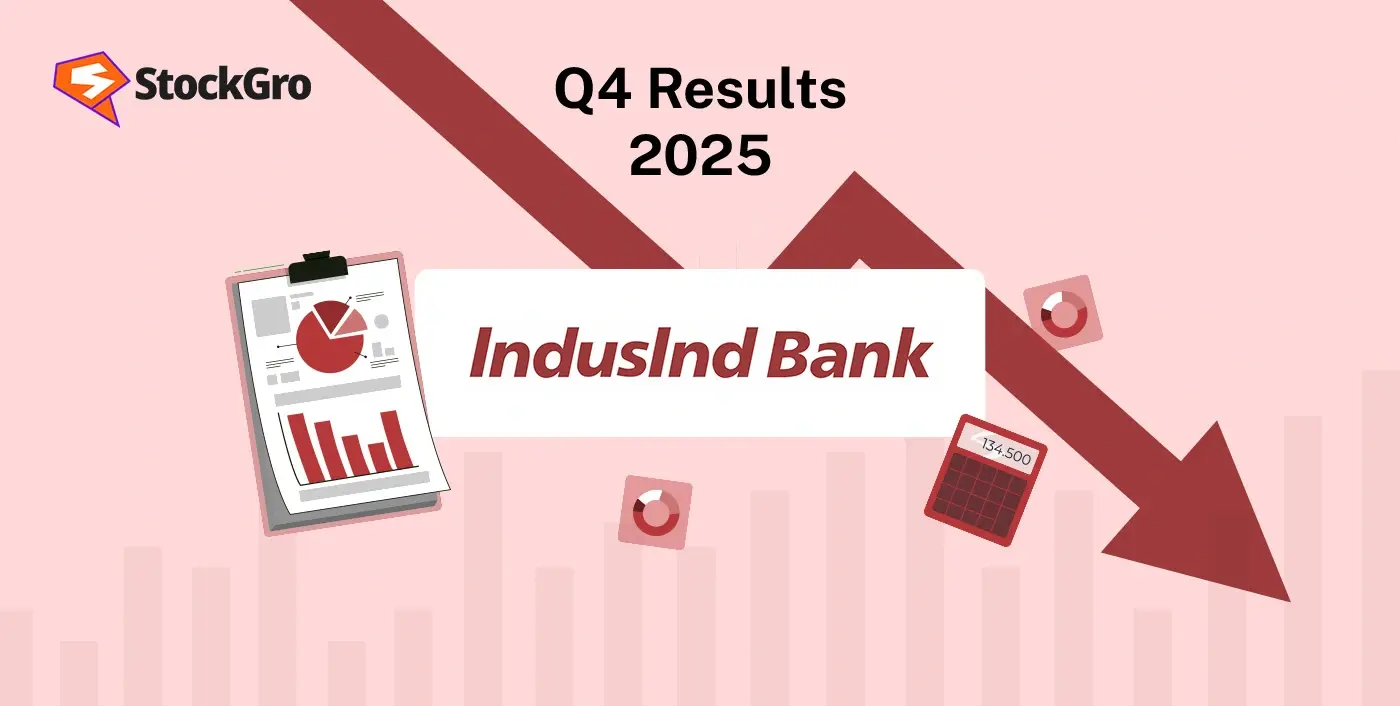
India’s telecom industry is the second-largest player in the world, playing an important role in connecting people across different regions. Telecom penetration in India has grown very fast over the years, increasing from 18.23% in FY16 to 84.51% in FY24, showing the country’s significant progress in mobile connectivity.
Alongside that, the Indian government has allocated around ₹12,195 crores under the Production-Linked Incentive (PLI) scheme to boost domestic manufacturing and investments in the telecom industry.
There are a few key players that have been driving this industry in an effective manner. Among them, let us analyse two major giants of this sector, Bharti Airtel and Reliance Jio. In this blog, we’ll also take a detailed comparison between Jio vs Airtel which is better in 2025.
Also Read: India’s Top E-Commerce Stocks for 2025
Telecom Industry overview
India’s telecom sector boasts a massive 1,188 million subscriber base, making it the second-largest telecom market globally in terms of subscribers. This sector is consistently growing in both urban and rural areas – earlier dominated by 4G, it is now on the path to becoming fully 5G-enabled. Further, the bifurcation of urban and rural subscribers is as follows:
- Urban Subscribers: 647 million (54.5%)
- Rural Subscribers: 541 million (45.5%)
The number of internet subscribers is also increasing, with the subscriber count reaching 971 million as of September 2024, an increase of 0.20% from 969 million as of June 2024. Further, India is planning to strengthen its global mobile manufacturing scope, with plans to manufacture mobile phones worth USD 126 billion by FY26.
Looking ahead, India is proactively laying the groundwork for 6G technology, with policy frameworks and research and development moves already underway. This is being done to ensure ultra-high-speed connectivity for smart infrastructure.
Also Read: List of Top Dyes and Pigments Stocks in India 2025
Bharti Airtel Ltd overview
Bharti Airtel Ltd is one of the top telecom companies, operating in 17 countries, including India, Sri Lanka, Africa etc. It offers various services like:
- Digital Services
- Financial Services (Airtel Finance)
- Cloud Communications (Airtel IQ)
- Data Centres (Nxtra)
- Entertainment (Xstream, Wynk Music)
- Payments (Airtel Payment Bank)
In terms of Manufactured Capital for FY24, Airtel has built an extensive infrastructure, including 355,000 mobile network towers, 752,136 mobile broadband base stations, and 440,000 km of optical fibre network. The company also operates 7 submarine cable systems, 12 data centres, and 120 edge data centres, positioning itself as a key player in the telecommunications and digital services sectors.
Let us have a look at the recent Q3FY25 results of this company:
| Metrics (In ₹ Crore) | Bharti Airtel Ltd |
| Revenue | 45,129 |
| Expenses | 20,533 |
| EBITDA | 24,597 |
| Net Profit | 16,135 |
| EPS (In ₹) | 25.95 |
Bharti Airtel is currently trading at a price of ₹1,823 as of 29 April 2025. Further, the stock has made a 52-week high and low of ₹1,904 and ₹1,219, respectively.
In the past 5 years, this stock has delivered a return of around 250%. In the chart mentioned below, we can observe the trend in the stock:
Source: StockGro
Reliance Jio Infocomm Ltd Overview
Reliance Jio Infocomm Ltd, a subsidiary of Jio Platforms Ltd, is one of India’s leading digital service providers. Jio has rapidly expanded its footprint and now serves over 481.8 million subscribers as of March 2024..
- Mobility
- Home broadband (JioFiber),
- Enterprise solutions
- Cloud services, 5G networks
- Digital platforms such as JioTV, JioCinema, JioSaavn, and JioMart.
Jio operates a fibre optic network and multiple edge data centres, alongside the largest standalone 5G network rollout globally. The company heavily invests in AI and IoT readiness, along with 6G technology.
However Reliance Jio Infocomm stock is not yet listed, but its IPO is expected to launch in the second or third quarter of FY26.
Company Financials
Let us take 5 metrics and perform the financial Airtel and Jio comparison. Below are the results for the financial year FY24:
| Metrics (In ₹ Crore) | Bharti Airtel Ltd | Reliance Jio Infocomm Ltd |
| Revenue | 1,49,982 | 1,00,891 |
| Expenses | 71,691 | 52,224 |
| Expense Margin | 47.80% | 51.76% |
| EBITDA | 78,292 | 48,667 |
| EBITDA Margin | 52.2% | 48.2% |
| Net Profit | 8,558 | 20,607 |
| Net Profit Margin | 5.7% | 20.4% |
| EPS (In ₹) | 13.2 | 4.58 |
| Subscribers (Q3FY25) | 38.5 | 46.5 |
| ARPU ( In ₹) as of Q3FY25 | 206 | 245 |
1. Revenue
Revenue refers to the number of sales the company has done in a year. During FY24, out of both companies, Bharti Airtel reported sales of ₹1,49,982 crores. The major drivers for revenue were strong growth in Airtel Business, led by digital services like IoT, cybersecurity, rising user base and disbursements in Airtel Finance
At the same time, Reliance Jio reported revenue of ₹1,00,891 crores. Reliance Jio’s AirFiber holds 85% market share, driven by proprietary technology and lower connection costs. Overall, Bharti Airtel outperformed Reliance Jio in terms of revenue
2. Expenses
Expenses refer to the costs that the company incurs to carry out its operations. This includes raw material costs, employee expenses, and other operational expenditures. Here, Bharti Airtel reported expenses of ₹71,691 crores, where a major proportion, 34%, was covered by material cost, whereas Reliance Jio had expenses of ₹52,224 crores.
Looking at the expense margin, which is the percentage of expenses about the company’s revenue. The expense margin for Bharti Airtel is 47.8%, while for Reliance Jio it is 51.7%. This means Jio has higher expenses, suggesting that Bharti Airtel is more efficient in managing its costs. Lower expenses generally reflect better operational efficiency.
3. EBITDA
EBITDA refers to Earnings Before Interest, Taxes, Depreciation, and Amortisation, which is also known as operating profit. In the case of Bharti Airtel, the EBITDA is ₹78,292 crores, while for Reliance Jio, it is ₹48,667 crores.
Now, looking at the EBITDA margin, which is the percentage of EBITDA to sales, Bharti Airtel has a margin of 52.2%, whereas Reliance Jio has 48.2%. A higher EBITDA margin indicates better operating efficiency, and in this case, Bharti Airtel is leading, reflecting stronger operational performance
4. Net Profit
Net profit is the final profit a company earns after removing all expenses. The net profit margin is the percentage of net profit to total sales. A higher net profit margin is considered better, as it indicates a company’s ability to efficiently convert revenue into actual profit.
In this case, Bharti Airtel reported a net profit of ₹8,558 crores with a net profit margin of 5.7%, whereas Reliance Jio reported a net profit of ₹20,607 crores with a margin of 20.4%. This indicates that Reliance Jio has performed better than Bharti Airtel in this metric.
5. EPS
EPS, or Earnings Per Share, refers to how much profit a business firm is making behind each share. It is calculated by dividing the net profit by the outstanding shares. A higher EPS is better for investors, as it reflects strong returns. In this case, Bharti Airtel has an EPS of ₹13.2, whereas Reliance Jio has an EPS of ₹4.5. Here, Bharti Airtel is leading, providing better returns and earnings to its investors.
6. Subscribers
As of December 2024, the total subscribers of Jio stood at 46.5 crore, and Bharti Airtel’s total subscribers stood at 38.5 crore. Jio added 39 lakh more subscribers during the month, and Bharit Airtel added 10.3 lakh. In terms of total subscriber base and monthly additions, Jio leads, indicating stronger customer acquisition and market reach.
7. ARPU
The average revenue per unit (ARPU) for Jio is ₹245, whereas for Bharti Airtel it’s ₹206. Jio’s ARPU increased by 13% YoY, whereas Bharti Airtel has increased 18% YoY. This is majorly due to the price hike which happened in the year 2024. In this, Jio leads ahead with more ARPU.
Based on the above comparison of the companies on the metrics, let’s try to conclude:
| Metric | Bharti Airtel Ltd | Reliance Jio Infocomm Ltd |
| Revenue | 👍 | 👎 |
| Expenses | 👍 | 👎 |
| EBITDA | 👍 | 👎 |
| Net Profit | 👎 | 👍 |
| EPS | 👍 | 👎 |
| Subscribers | 👎 | 👍 |
| ARPU | 👎 | 👍 |
Also Read: List of Top Breweries & Distilleries Stocks in India 2025
Bottomline
Bharti Airtel has led in revenue, expense management, EBITDA, and EPS, whereas Reliance Jio has only led in one metric, net profit. Based on this, we can conclude that in Jio vs Airtel comparison, Bharti Airtel Ltd is performing operationally better than Reliance Jio.
However, both companies are still key players in the telecom sector and play a vital role in serving consumers by helping them access networks. Investors should carefully analyse such metrics prior to making any decision to invest in any stock.

